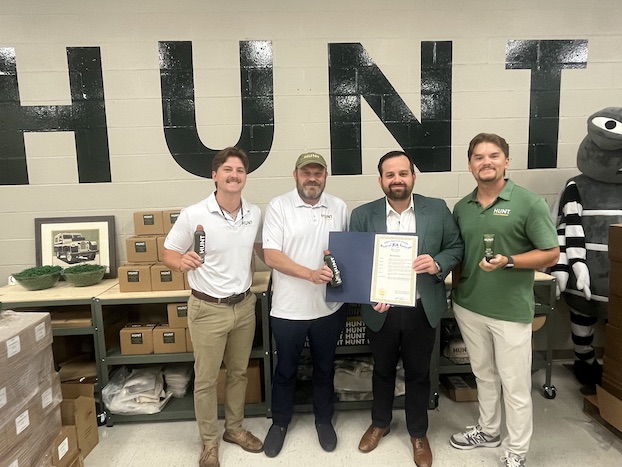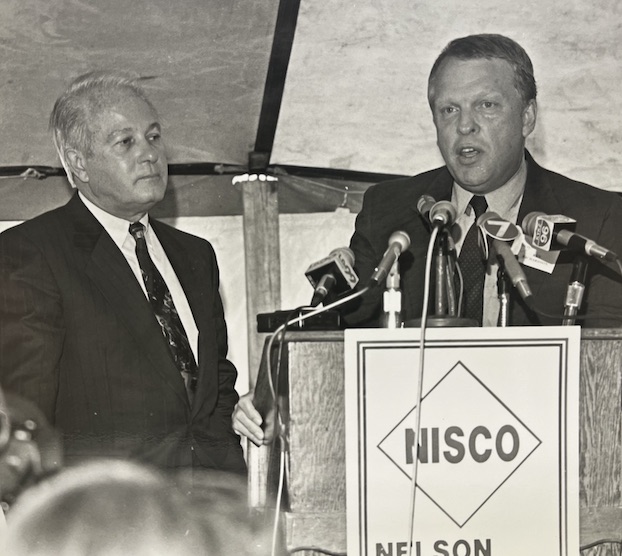Geocaching: Playing hide and seek in Sam Houston Jones State Park
Published 10:18 am Friday, July 11, 2025

- Geocaches are hide-and-seek containers purposely hidden, eagerly sought, and enthusiastically found by hobbyists around the world. Geocachers use a geocaching app, found at www.geocaching.com, to view maps of nearby geocaches and to log their finds. (Emily Burleigh / American Press)
At the beginning of June, my best friend of 14 years, Wesley Jackson, and I embarked on a new adventure: geocaching.
In a time where digital worlds dominate the day-to-day, geocaching offers a real-world adventure that uses the technology that keeps us indoors. A modern-day treasure hunt, geocaching invites people of all ages to get outside, engage with the environment and find hidden containers (geocaches) anywhere and everywhere.
Geocaching was created in 2000 by Dave Ulmer after the United States Government fixed a GPS error called GPS signal degradation, making GPS devices significantly more accurate.
Trending
It was originally called “Great American GPS Stash Hunt,” and after a few passionate hobbyists with pencils, paper and a whole lot of creativity picked up the game, it spread like wildfire.
The process is much simpler in 2025. You download the app – Geocaching – to your GPS-enabled mobile device, create an account and look for the caches. On June 6, I did just that before picking up Wesley and making our way to Sam Houston Jones State Park.
Taking a hike in Sam Houston Jones State Park is one of our favorite Friday activities, so we were familiar with the trails. And a quick glance at the app showed us that there are dozens of geocaches throughout the park, especially on our favorite trail: the Orange Trail.
The Orange Trail runs alongside the Calcasieu River. You’ll often encounter animals – squirrels, rabbits, snakes – and boaters blasting Top 100 Hits as they ride the water. Friday was no exception, except instead of just walking the trail, Wesley and I were on the hunt.
The 1.9-mile trail usually takes us about 30 minutes to traverse, but this time around, we were there for an hour and a half. That is because there are 12 geocaches on the Orange Trail. I did the math – we averaged about nine minutes per geocache. Then I did more math – we only found 66 percent of the nine geoaches we attempted.
While these stats might be a bit embarrassing, it’s certainly because we were not prepared.
Trending
We quickly learned a few lessons.
One: Bring. Bug. Spray. And if you can, wear pants. As park regulars, we were not expecting the trees to fight back, but we walked out of that trail with some battle scars.
Two: Bring trinkets! I’ve never met someone who geocaches, but what we discovered is that the hobby has a thriving (and fun) community. All of the caches we did manage to find had papers with dozens of names of geocachers who have found them within just the past few months. Alongside them were tchotchkes left behind. After stalking a few forums, I learned that this is a common practice. Leave a doohickey. Take a doohickey.
Three: Geocaching is a skill. The difficulty ranges from “hidden behind a piece of bark on the ground,” or difficulty one, to “I don’t think this geocache actually exists,” difficulty five. They also range in size, typically from “micro” to “large.” We mostly found the micros, and never encountered anything bigger than “small.”
Wesley and I left the trail sweaty and scratched up, but filled with a deep sense of community that we’ve been longing for. There is a message board for each cache called “past logs” where you can see messages from fellow geocachers who found (or didn’t find) the loot like, “Found! Too scared to touch at first” and “Thanks for my first find! My 6 year old loved it!”
In the end, the both of us found solace knowing that we would be back on their trail soon to find the caches that evaded us, excited to share our successes with our newfound treasure-hunting friends.





